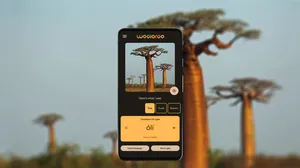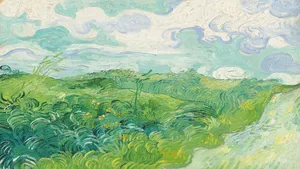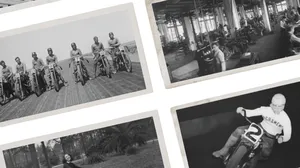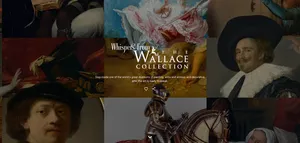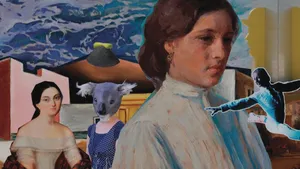Explore Brasilia: the designed city
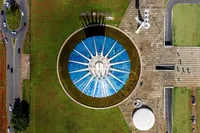
In the highlands of Brazil sits an architectural and cultural gem: the capital city of Brasília, designed and developed in the 1950s by architects and urban planners Lúcio Costa and Oscar Niemeyer. The designed city was part of the plan to move the capital from Rio de Janeiro to a more central location in the country.
I am very happy to see the city where I grew up featured on Google Arts & Culture after 60 years of cultivating a unique culture from its designed origins. Google Arts & Culture invites everyone around the world to learn more about the extraordinary architecture, the bustling art and culture scene and the amazing history of Brasilia, a city designed for the future.
Here are five things about Brasilia to get you started:
- How did Brasilia come to life?
The first documented idea of transferring the capital from Rio de Janeiro to the interior of Brazil dates back to the 18th century and in 1891, the change of the country's capital was included in the Constitution. It is only many years later that, inspired by an image of industrial progress, the newly elected Brazilian President Juscelino Kubitschek finally began implementing the project of creating a new capital for Brazil. During his election campaign, Kubitschek had promised fifty years of progress in the span of his five-year term (1955-1960). Discover more about the history of the conception and construction of the city of Brasilia here.
2. Meet the architects and artists that made Brasilia an open-air museum
Many of the landmark buildings in Brasilia were designed by iconic architect, Oscar Niemeyer. Through the project you can learn about his pioneering life and work and discover some of his most iconic creations in 3D. In addition to government buildings, which constitute some of the most magnificent creations, the work of great artists and architects like Oscar Niemeyer impacted the life of the new capital, integrating buildings of every kind: religious, cultural and commercial. In this sense, Brasilia becomes an open-air museum. The encounter between Niemeyer with the artist Athos Bulcão left a legacy of the most successful examples of the integration of different arts in the panorama of modern Brazilian architecture, all around the city.
Itamaraty - Detalhes do Pilar Bento Viana, from the collection of Instituto dos Arquitetos do Brasil - Departamento Distrito Federal
Tile Panel at the Green Hall at the National Congress by Athos Bulcão, Fundação Athos Bulcão
Museu Nacional by Joana França, from the collection of Instituto dos Arquitetos do Brasil - Departamento Distrito Federal
Chichá-do-cerrado (Sterculia striata), Museu do Cerrado
Verão by Marysia Portinari, from the collection of the Chamber of Deputies, Brazil
Capturing Verão by Marysia Portinari with Art Camera technology at the Chamber of Deputies
Retrato de Zumbi dos Palmares by Juarez Venancio, from the collection of the Chamber of Deputies, Brazil
Tambor de Crioula de Seu Teodoro, Complexo Cultural Samambaia
3. Explore Brasilia museums
The capital offers a great deal of museums committed to preserving art. From the National Museum of the Republic to the Athos Bulcão Foundation and the art collection of the Chamber of Deputies, start exploring with works from the five artists from Brazil whose work can be found in Brasília's art collections. Discover the hidden details of “Buffalo and the Siouxies”, by Alice Lara or peek into the art details inside the Chamber of Deputies.
4. Dive into the cultural life
The city of Brasilia and its surroundings are home to a bustling cultural life. Discover institutions such as the Brasilia Public Library, which gathers the communities of Brasilia with its programs since the year of its foundation, and the Cultural Complex of Samambaia, a beacon for Brazilian culture that organizes festivals and events. Brasilia is also home to many exhibitions: Chiharu Shiota or the VAIVÉM, a retrospective about history and perspectives of a simple object, the hammock, both hosted at the Centro Cultural Banco do Brasil Brasília.
5. Discover the nature
The Cerrado, a vast tropical savanna ecoregion in the center of Brazil, is home to a vast natural environment. The stories of this ecosystem date back to the beginning of human history and it is one of the richest and oldest biomes on the planet. The Brazilian savanna has 12,829 native plant species that depend on the Cerrado's 874 bird species—37 of which are native to the Cerrado—to spread their seeds and pollinate their flowers. You can go on a bird watching tour or explore the diversity of frogs that inhabit the region.
We invite everyone to get new perspectives on the city's stunning designs, history and culture, visiting the project at g.co/explorebrasilia and on the Google Arts & Culture app on iOS or Android.


